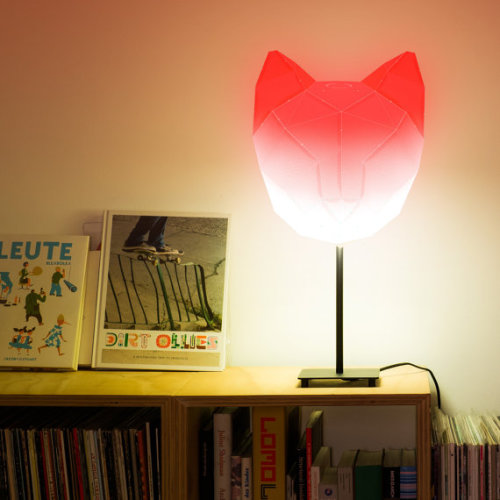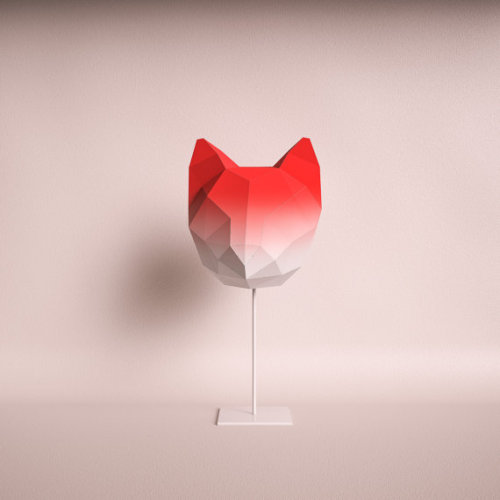“Adding Colour To Water… In Zero G” [x]
“Adding colour to water… in zero g” [x]
More Posts from Smartler and Others









Watch: If you miss tonight’s supermoon lunar eclipse you won’t get another glimpse for a long time.




These gradient colored geometric animal cutouts by designers Maik Perfahl and Wolfgang List make great lamp shades, masks or something entirely different! Available in various fun animal shapes like cat, fox, penguin and rabbit, you can really get creative with how you choose to showcase them. Check out Most Likely Shop to see more.
Submitted by @asapscience
Science is so amazing, but it’s being de-funded around the world. We hope to make a difference with this video:
Your sharing is greatly appreciated.
“Consensual sex” is just sex. To say that implies that there is such a thing as “non consensual sex”, which there isn’t. That’s rape. That is what it needs to be called. There is only sex or rape. Do not teach people that rape is just another type of sex. They are two very separate events. You wouldn’t say “breathing swimming” and “non breathing swimming”, you say swimming and drowning.

THE GIANT MANATEE NEBULA Bright astronomical objects that are visible to the eye and optical telescopes are often nicknamed for their resemblance to earthly objects. A newly discovered view of a 20,000 year old supernova remnant is no different, resembling a beloved endangered species. W50 (or the Giant Manatee Nebula) is one of the largest supernova remnants ever viewed by the Karl G. Jansky Very Large Array (VLA). This large cloud, nearly 700 light years across, formed when a giant star exploded as a supernova around 20,000 years ago, spewing its outer gases flying outwards to form an expanding bubble. The remaining super dense relic of that giant star, very likely a black hole, feeds on gas from a closeby companion star which form a disk around the black hole. This disk and the black hole’s network of powerful magnetic field lines pull out charged particles out of the disk and channel them outward in jets that travel almost at the speed of light, acting like a giant railroad system. This pairing system of a black hole and its feeder star are both known as the SS433 microquasar. Over time, this awesome image of Florida’s “sea cow” will become mishapen, as the micro quaser’s jets will force their way through the expanding gas bubble of W50, punching bulges outward on either side of it. Until then, it will continue to be another wonder in the sky while providing more clues to fill the history of this giant cloud. –Sanj SOURCE:http://www.sciencedaily.com/releases/2013/01/130119185021.htm National Radio Astronomy Observatory. “Microquasar makes a giant manatee nebula.” ScienceDaily, 19 Jan. 2013. Web. 24 Jan. 2013. Image:Left: W50 supernova remnant in radio (green) against the infrared background of stars and dust (red). A Florida Manatee rests underwater in Three Sisters Springs in Crystal River, Florida. Image Credit: Left: NRAO/AUI/NSF, K. Golap, M. Goss; NASA’s Wide Field Survey Explorer (WISE). Right: Image used with permission from Tracy Colson, courtesy of NRAO

For more amazing images and posts about how Astronomy is Awesome, check us out!
http://astronomyisawesome.com/
As always, please feel free to ask questions and we love it when you reblog!
#astronomy #space #nasa #hubble space telescope #nebula #nebulae #galaxy
all too well was requested so i decided to try something different.
imagine: all too well as a voicemail.
use headphones






New Star Wars Inspired Bows by Magical Ribbons
What Are the Bright Spots on Ceres?

Dwarf planet Ceres has more than 130 bright areas, and most of them are associated with impact craters. Now, Ceres has revealed some of its well-kept secrets in two new studies in the journal Nature, thanks to data from our Dawn spacecraft.
Two studies have been looking into the mystery behind these bright areas. One study identifies this bright material as a kind of salt, while the other study suggests the detection of ammonia-rich clays.
Study authors write that the bright material is consistent with a type of magnesium sulfate called hexahydrite. A different type of magnesium sulfate is familiar on Earth as Epsom salt.

Researchers, using images from Dawn’s framing camera, suggest that these salt-rich areas were left behind when water-ice sublimated in the past. Impacts from asteroids would have unearthed the mixture of ice and salt.
An image of Occator Crater (below) shows the brightest material on Ceres. Occator itself is 60 miles in diameter, and its central pit, covered by this bright material, measures about 6 miles wide. With its sharp rim and walls, it appears to be among the youngest features on the dwarf planet.

In the second nature study, members of the Dawn science team examined the composition of Ceres and found evidence for ammonia-rich clays. Why is this important?
Well, ammonia ice by itself would evaporate on Ceres today, because it is too warm. However, ammonia molecules could be stable if present in combination with other minerals. This raises the possibility that Ceres did not originate in the main asteroid belt between Mars and Jupiter, where it currently resides. But instead, might have formed in the outer solar system! Another idea is that Ceres formed close to its present position, incorporating materials that drifted in from the outer solar system, near the orbit of Neptune, where nitrogen ices are thermally stable.

As of this week, our Dawn spacecraft has reached its final orbital altitude at Ceres (about 240 miles from the surface). In mid-December, it will begin taking observations from this orbit, so be sure to check back for details!
ake sure to follow us on Tumblr for your regular dose of space: http://nasa.tumblr.com
I feel ya








-
 peridots-pixiwolf liked this · 8 months ago
peridots-pixiwolf liked this · 8 months ago -
 colorfulcollectorpirate liked this · 2 years ago
colorfulcollectorpirate liked this · 2 years ago -
 royallylazy liked this · 5 years ago
royallylazy liked this · 5 years ago -
 ravencremisi liked this · 5 years ago
ravencremisi liked this · 5 years ago -
 comicphans reblogged this · 5 years ago
comicphans reblogged this · 5 years ago -
 aries-1995 reblogged this · 6 years ago
aries-1995 reblogged this · 6 years ago -
 chernobylstuff-blog1 liked this · 6 years ago
chernobylstuff-blog1 liked this · 6 years ago -
 ohhmichelettoohh liked this · 6 years ago
ohhmichelettoohh liked this · 6 years ago -
 johnsonsmithjones reblogged this · 6 years ago
johnsonsmithjones reblogged this · 6 years ago -
 johnsonsmithjones liked this · 6 years ago
johnsonsmithjones liked this · 6 years ago -
 siuateotl reblogged this · 6 years ago
siuateotl reblogged this · 6 years ago -
 mo-mew liked this · 6 years ago
mo-mew liked this · 6 years ago -
 maevamacabre liked this · 6 years ago
maevamacabre liked this · 6 years ago -
 colorless1004 liked this · 6 years ago
colorless1004 liked this · 6 years ago -
 whirlpooldweller liked this · 7 years ago
whirlpooldweller liked this · 7 years ago -
 mentallityofall liked this · 7 years ago
mentallityofall liked this · 7 years ago -
 oldmansaverio liked this · 7 years ago
oldmansaverio liked this · 7 years ago -
 emilyrheaart reblogged this · 7 years ago
emilyrheaart reblogged this · 7 years ago -
 virtualshame liked this · 7 years ago
virtualshame liked this · 7 years ago -
 distinguishedenemypolice liked this · 7 years ago
distinguishedenemypolice liked this · 7 years ago